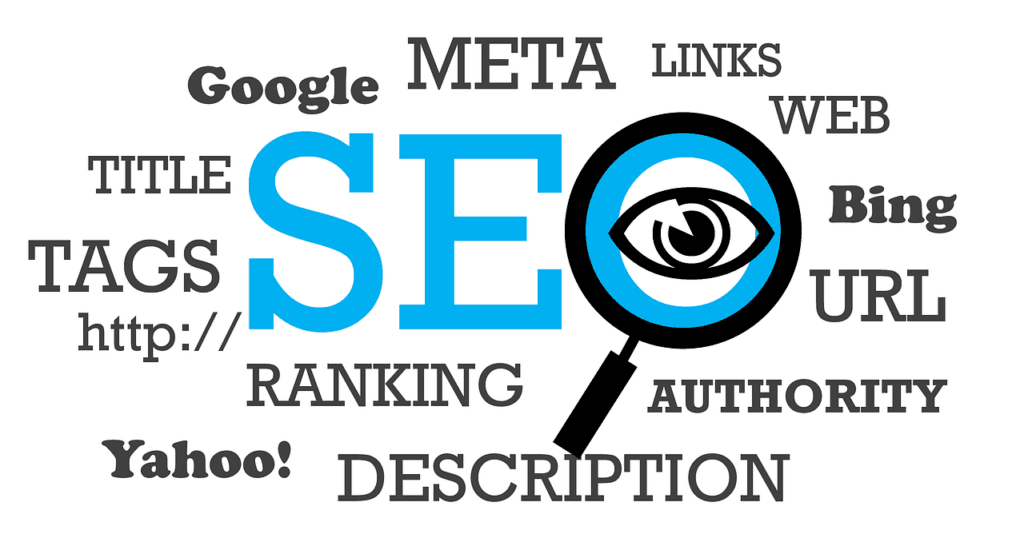This Article has been revised, edited and added to, by Poulomi Chakraborty
- Crafting Product Descriptions: Eco-Friendly Products vs. Conventional Products
- Understanding the Audience
- Emphasizing Sustainability
- Highlighting Certifications and Eco-labels
- Storytelling
- Language and Tone
- Emphasizing Lifecycle Benefits
- Addressing Pain Points with Eco-friendly Solutions
- Utilizing Sensory Words
- Showcasing Third-Party Endorsements and Certifications
- Leveraging Comparative Language
- Integrating Visual Storytelling
- Structuring and Optimizing Eco-Friendly Product Descriptions for Maximum Impact
- The Importance of a Strong Opening
- Detailed Feature Breakdown
- Benefits Over Features
- Emotional Connection Through Storytelling
- Closing with a Call to Action
- SEO Optimization
- Using Visuals and Media
- Crafting an Engaging Opening Statement
- Building a Narrative Around Sustainability
- Using Clear, Actionable Language
- Highlighting Unique Selling Propositions (USPs)
- Closing With a Compelling Call to Action
- Optimizing for Search Engines and Readability
- Leveraging User-Generated Content and Reviews to Enhance Credibility
- Strategies for Effectively Marketing Eco-Friendly Products Online
- Exploring Additional Digital Marketing Techniques for Eco-Friendly Products
- Conclusion
Welcome to the world of eco-friendly marketing! If you’re looking to make your green products stand out in a crowded marketplace, crafting compelling product descriptions is key. In this detailed guide, we’ll walk you through the essentials of creating product descriptions that not only inform but also inspire and convert environmentally conscious consumers. Let’s dive in and discover how to communicate your sustainable commitments effectively.
Crafting Product Descriptions: Eco-Friendly Products vs. Conventional Products

When it comes to selling products, whether they are eco-friendly or not, the product description plays a pivotal role in influencing buyer decisions. However, the approach for eco-friendly products requires a nuanced touch that resonates with a specific audience that is mindful of sustainability and the environmental impact of their purchases.
Understanding the Audience
The fundamental difference between marketing eco-friendly products and conventional products lies in understanding the audience. Eco-conscious consumers are not just looking for a product to fulfill their needs; they are looking for reassurance that their purchase aligns with their values. They tend to be more receptive to messages that highlight sustainability, ethical sourcing, and environmental responsibility. This audience appreciates transparency and detailed information about how products are made and how they contribute to conserving the environment.
Emphasizing Sustainability
For eco-friendly products, the product description must do more than simply describe; it must convey the value of sustainability. This involves highlighting the sustainable features of the product such as biodegradable materials, energy-efficient manufacturing processes, or cruelty-free testing. The language used should evoke a sense of contribution towards a greater good, tapping into the emotional aspect of purchasing decisions.
Highlighting Certifications and Eco-labels
While conventional products might emphasize features or cost-effectiveness, eco-friendly products benefit greatly from the inclusion of certifications and eco-labels in their descriptions. These elements serve as proof that the products meet stringent environmental and ethical standards, which can significantly influence the purchasing decisions of eco-conscious consumers. Including specifics such as “certified organic”, “Fair Trade”, or “Energy Star rated” can enhance credibility and attract a more discerning customer base.
Storytelling
Another critical aspect where eco-friendly product descriptions differ from conventional ones is the use of storytelling. Sharing the story behind a product—such as the inspiration for its creation, the journey of its materials from source to store, or the impact of purchase on specific environmental initiatives—can create a deeper emotional connection with the audience. This narrative approach helps to humanize the brand and forge stronger customer loyalty, which is particularly effective among consumers who value authenticity and ethical considerations.
Language and Tone
The choice of language and tone also sets eco-friendly product descriptions apart. While all product descriptions should be clear and engaging, those for eco-friendly products should use warm, optimistic, and inclusive language. They should invite readers to join a movement towards sustainability, making each purchase feel like a step towards a better planet. This positive framing can make the product more appealing to those who wish to make a difference through their consumer choices.
Emphasizing Lifecycle Benefits
A crucial aspect of describing eco-friendly products is focusing on their entire lifecycle—from production through disposal. Startups should articulate how the products are sourced, manufactured, and packaged with minimal environmental impact. Descriptions should also explain how consumers can responsibly dispose of the product or recycle it, emphasizing the product’s role in the circular economy. This comprehensive lifecycle approach reassures customers that their purchase supports sustainable practices at every stage.
Addressing Pain Points with Eco-friendly Solutions
Understanding and addressing the specific pain points that drive consumers towards eco-friendly products can significantly enhance the effectiveness of your product descriptions. For instance, if your target market is concerned about harmful chemicals in home products, highlight how your product offers a safe, natural alternative. By directly solving these pain points with clear, concise information, startups can better connect with their audience and increase the likelihood of conversion.
Utilizing Sensory Words
To make eco-friendly product descriptions more compelling, incorporate sensory words that help paint a vivid picture of the product’s benefits. Describing a product not just as “made from bamboo” but as having a “smooth, naturally cooling bamboo texture” can help potential customers visualize and feel the product’s quality and eco-friendliness. This sensory approach can enhance the perceived value and appeal of the product.
Showcasing Third-Party Endorsements and Certifications
Including third-party endorsements and certifications can significantly boost the credibility of eco-friendly products. If your product has been certified by a recognized environmental organization or has won sustainability awards, make sure this information is prominently featured in the product description. These endorsements serve as a powerful trust signal to customers who may be skeptical about the authenticity of eco-friendly claims.
Leveraging Comparative Language
While maintaining a positive tone, consider using comparative language that subtly highlights how your products are a better choice than conventional alternatives. For example, instead of merely stating that a product is “free from synthetic materials,” explain how this benefits the user compared to traditional products, such as being safer for their skin or better for the environment. This not only educates consumers about the advantages of eco-friendly products but also positions your brand as a knowledgeable and trustworthy source.
Integrating Visual Storytelling
Although not part of the textual description, supporting product visuals with a story can significantly enhance the overall presentation. Use images or videos that show the product in use, especially in ways that demonstrate its environmental benefits. For example, visuals of a reusable water bottle being refilled at a mountain spring can reinforce messages of adventure and sustainability.
By understanding these key differences in crafting product descriptions for eco-friendly versus conventional products, brands can more effectively reach and engage their target audiences. The strategic emphasis on sustainability, detailed information, certifications, storytelling, and positive language not only enhances the appeal of the products but also aligns with the values and expectations of eco-conscious consumers.
Structuring and Optimizing Eco-Friendly Product Descriptions for Maximum Impact

Creating a well-structured and optimized product description for eco-friendly products is crucial in capturing and retaining the interest of environmentally conscious consumers. Let’s explore how to effectively organize and enhance these descriptions to ensure they resonate with your target audience and drive conversions.
The Importance of a Strong Opening
The opening sentence of your product description is where you grab the consumer’s attention. It should immediately convey the unique selling proposition (USP) of your eco-friendly product. Start with a compelling fact, an intriguing benefit, or a striking statistic that highlights the eco-friendliness of the product. For example, beginning with “Experience the sheer comfort of 100% organic cotton” quickly aligns the product with consumer values of natural and sustainable materials.
Detailed Feature Breakdown
After capturing the shopper’s interest, delve into a detailed breakdown of the product’s features, focusing on those that emphasize sustainability. Describe the materials, origin, manufacturing process, and any other elements that demonstrate the product’s eco-friendly attributes. However, it’s important to keep the descriptions simple and jargon-free to ensure they are accessible to all consumers, not just those well-versed in environmental terminology.
Benefits Over Features
While detailing the features is important, translating those features into clear benefits for the consumer is what sells the product. Each feature should be linked to a tangible benefit that enhances the consumer’s life, community, or the planet. For instance, if a product is made using solar energy, explain how this reduces carbon footprint and contributes to less environmental impact, which in turn supports cleaner air and a healthier planet.
Emotional Connection Through Storytelling
Weave a narrative around the product that connects on an emotional level. This could involve the story of how the product was developed, the people behind it, or the positive change the company aims to make in the world. Storytelling can transform a simple purchase into an emotional investment, increasing consumer engagement and loyalty. A narrative about a community that benefits from sustainable business practices, for example, can motivate consumers to support the brand.
Closing with a Call to Action
End the product description with a strong call to action (CTA) that encourages immediate purchase. The CTA should reinforce the positive impact of buying the product, such as “Join us in making the world greener, one purchase at a time” or “Get yours today and start making a difference.” This not only prompts the consumer to act but also reinforces the value of their contribution to a larger cause.
SEO Optimization
To ensure that your eco-friendly product descriptions reach as wide an audience as possible, they must be optimized for search engines. Use relevant keywords that potential customers might use when searching for eco-friendly products. These keywords should be naturally integrated into the text, particularly in headings, the opening sentence, and the conclusion, to enhance visibility without compromising readability.
Using Visuals and Media
Finally, complement your text with high-quality visuals and media that showcase the eco-friendly features of the product. Images of the product in use, videos detailing its sustainable manufacturing process, or infographics highlighting its environmental benefits can greatly enhance the effectiveness of your product descriptions. Visuals not only help illustrate the features and benefits but also make the descriptions more engaging and shareable.
Crafting an Engaging Opening Statement
The first sentence of your product description should act as a hook that immediately grabs the attention of your potential customers. For eco-friendly products, this might involve striking a chord with the consumer’s environmental consciousness right from the beginning. Use a powerful statistic, an inspiring quote, or a surprising fact about the environmental benefits of using your product. For example, starting with “Join us in saving 1,000 trees this year by choosing our bamboo-based products” can immediately draw in those who are passionate about deforestation issues.
Building a Narrative Around Sustainability
Following the opening, the body of your description should tell a story about the product that emphasizes its sustainability. This narrative should seamlessly incorporate details about the sourcing of materials, the ethical standards of production, and the community or environmental initiatives supported by purchases. For instance, describe how each purchase contributes to local community projects or global efforts like ocean cleanup. This not only informs consumers but also helps them feel a part of something larger than themselves.
Using Clear, Actionable Language
While it’s important to be informative, the ultimate goal of a product description is to persuade the consumer to make a purchase. Use direct, action-oriented language that guides consumers toward this decision. Phrases like “switch to sustainable,” “reduce your carbon footprint,” or “embrace a healthier lifestyle” serve as strong calls to action that align with the consumer’s desire to make positive changes.
Highlighting Unique Selling Propositions (USPs)
Identify and clearly state what sets your product apart from others in the market. This might be an innovative use of materials, a unique design that reduces waste, or a special feature that offers convenience without compromising on sustainability. Make these USPs prominent to ensure they catch the reader’s eye. Explaining how these features translate into real-world benefits can help solidify the consumer’s decision to buy.
Closing With a Compelling Call to Action
End your product description with a compelling call to action that reinforces the initial hook and encourages immediate purchase. This could be a reminder of the limited availability of the product due to seasonal materials, an invitation to join an exclusive club of users who are pioneers in adopting sustainable solutions, or an urgent call to act before a special offer expires.
Optimizing for Search Engines and Readability
Ensure that your product descriptions are optimized not just for search engines but also for readability. Use keywords naturally and strategically, focusing on those that potential customers are likely to use when searching for eco-friendly products. Additionally, make sure your text is easy to read; break it down into short paragraphs and include subheadings where appropriate to improve flow and enhance engagement.
By structuring and optimizing your eco-friendly product descriptions effectively, you can better engage with environmentally conscious consumers and drive more conversions. The key is to blend informative content with emotional appeal, making each description not just a pitch but a story that aligns with your audience’s values and aspirations.
Leveraging User-Generated Content and Reviews to Enhance Credibility

In the world of eco-friendly products, trust and credibility are paramount. Consumers often rely on the experiences and recommendations of others before making a decision to purchase. Let’s explore how integrating user-generated content (UGC) and customer reviews can boost the credibility and appeal of your eco-friendly products.
The Power of Customer Reviews
Customer reviews are one of the most direct and influential forms of user-generated content. They provide prospective buyers with a candid look at the product from the perspective of someone who has already made the purchase and experienced the product first-hand.
Showcasing Honest Feedback
Encourage your customers to leave honest feedback about their experience with your product, specifically asking them to mention the eco-friendly aspects. Did the product live up to its sustainable claims? How does using it make them feel about their impact on the environment? This authentic feedback can sway potential customers who are on the fence, by confirming that your products perform as advertised and align with their values.
Responding to Reviews
Make it a practice to respond to reviews, whether they are positive or negative. This demonstrates that your company values customer feedback and is committed to continuous improvement. Engaging with reviews can also help clarify any misconceptions about your products and showcase your customer service philosophy.
Featuring User Stories and Testimonials
Beyond reviews, featuring user stories or testimonials can significantly enhance the perceived value of your products. These narratives can be more detailed and personal, providing a deeper insight into the customer’s journey with the product.
Creating Emotional Connections
Invite customers to share their stories about why they chose an eco-friendly product and what changes it has brought to their lives or the environment. These stories can be featured on your product pages, in your blogs, or on social media, creating an emotional appeal that resonates with like-minded consumers.
Visual Testimonials
Encourage users to submit photos or videos of themselves using the product in their everyday lives. This not only adds authenticity but also visually demonstrates the product in action, which can be more persuasive than text alone.
Utilizing Social Media Shares

Social media is a powerful tool for amplifying the reach of user-generated content. When customers post about your products, they provide a personal endorsement that is visible to their network, which can significantly expand your brand’s exposure.
Encouraging Social Sharing
Create campaigns or incentives that encourage customers to share their product experiences on social media. For example, you could run a contest where customers post pictures of themselves using your product in sustainable ways. Not only does this generate content, but it also engages the community and spreads awareness of your brand’s commitment to sustainability.
Hashtags and Social Proof
Develop unique hashtags for your products or sustainability campaigns. Hashtags make it easier for potential customers to find all related content in one place, building a collective story that adds layers of trust and community around your brand.
Integrating UGC into Marketing Strategies
Strategically integrate user-generated content into your marketing materials. Feature customer reviews prominently on your website, particularly on product pages and the homepage. Use positive testimonials in your email marketing, and highlight user stories in your newsletters.
By leveraging user-generated content and reviews, eco-friendly businesses can enhance their credibility and foster a community of loyal customers. These authentic endorsements help build trust in your brand and can be instrumental in convincing new customers to choose your products over less sustainable alternatives.

Related: Check out our free SEO suite

Strategies for Effectively Marketing Eco-Friendly Products Online
Marketing eco-friendly products online requires a unique approach that not only highlights the quality and usability of the products but also emphasizes their environmental benefits. Here’s how you can effectively use digital marketing strategies to promote your eco-friendly products and connect with your target audience.
Developing a Strong Brand Narrative
A compelling brand narrative is crucial for eco-friendly products. Your brand’s story should resonate with the values and expectations of eco-conscious consumers.
Crafting a Consistent Message
Ensure that your brand message consistently communicates your commitment to sustainability across all platforms. This includes your website, social media profiles, email campaigns, and any digital advertisements. The message should be clear: your brand stands for environmental responsibility and offers products that help consumers reduce their ecological footprint.
Highlighting the ‘Why’
Go beyond the what and how of your products and delve into why your company exists. What is the vision that drives your brand? How are you making a difference? This can be communicated through blog posts, about pages, and featured stories that focus on your company’s mission, the challenges you’re addressing, and the impacts of your efforts.
Utilizing Content Marketing
Content marketing is a powerful tool for educating and engaging potential customers. It allows you to present your products within the broader context of sustainability and lifestyle.
Educational Content
Create content that educates your audience about the importance of eco-friendly practices. This could include blog posts on the benefits of organic materials, the impact of recycling, or guides on living a more sustainable lifestyle. By providing valuable information, you establish your brand as a trustworthy source in the eco-friendly space.
How-to Videos and Tutorials
Leverage video content to show your products in action. Demonstrations on how to use your products or how they are made can be very effective. For instance, a video showing the lifecycle of your product from production to disposal can highlight its environmental benefits in a tangible way.
Engaging Through Social Media
Social media platforms are ideal for connecting with eco-conscious communities and spreading awareness about your products.
Building Community
Use social media to build a community around sustainable living. Engage with users who are passionate about the environment by sharing relevant content, participating in discussions, and supporting eco-friendly initiatives. This helps to build a loyal following that is likely to support and promote your brand organically.
Collaborations and Partnerships
Partner with influencers or other brands that align with your values. These partnerships can help reach a wider audience and lend additional credibility to your brand. Choose partners who are genuinely interested in sustainability and whose followers are likely to be interested in your products.
Optimizing for Search Engines
SEO is essential for making sure that your eco-friendly products are visible online.
Keyword Optimization
Research and use keywords that potential customers might use when searching for eco-friendly products. Include these keywords naturally in your website content, blog posts, product descriptions, and meta descriptions to improve your search engine ranking.
Local SEO
If you also sell products in physical locations, optimize for local SEO to attract local customers. This includes creating a Google My Business profile, getting listed in local directories, and using location-based keywords in your content.
Leveraging Reviews and Certifications
As previously discussed, showcasing customer reviews and relevant certifications can significantly enhance trust. Make sure these are visible on your product pages, in your advertisements, and during the checkout process to reassure customers of your commitment to quality and sustainability.
Exploring Additional Digital Marketing Techniques for Eco-Friendly Products

To further enhance the online presence and sales of eco-friendly products, you can incorporate a variety of innovative digital marketing techniques. These strategies not only help in attracting more eco-conscious consumers but also in retaining them and turning them into advocates for your brand.
Email Marketing Personalization
Email marketing remains one of the most effective digital marketing channels. For eco-friendly products, personalization can take this tool to the next level.
Segmenting Your Audience
Divide your email list based on customer behavior and preferences. This might include segments like recent purchasers, those interested in specific types of products (like zero-waste items), or customers who engage frequently with content about DIY sustainability projects. Tailored emails resonate more effectively, increasing the likelihood of engagement and conversion.
Content That Matters
Send emails that provide more than just promotional content. Include tips on sustainable living, success stories of how your products are making a difference, and updates on your sustainability efforts. This kind of content not only informs but also inspires your audience, reinforcing the value of their purchases.
Retargeting Campaigns
Retargeting is a powerful technique to re-engage individuals who have visited your website but left without purchasing.
Tailored Ads
Create retargeting ads that remind users of the products they viewed with messages that emphasize the eco-friendly attributes of the products. For example, “Complete your eco-friendly journey — revisit your cart and make a difference today!”
Cross-Platform Retargeting
Ensure that your retargeting efforts are not confined to just one platform. Use cross-platform retargeting strategies to reach your audience wherever they are online, whether on social networks, browsing blogs, or watching videos.
Social Proof and Trust Signals
In the realm of eco-friendly products, consumer trust is crucial. Leveraging social proof can significantly elevate your brand’s credibility.
Showcasing Impact
Regularly share statistics and stories about the impact your customers have made by choosing your products—like gallons of water saved, reduction in carbon footprint, or waste diverted from landfills. Visual content such as infographics and impact reports can make this data more digestible and shareable.
Highlighting Partnerships
Promote any partnerships with environmental organizations or certifications from credible institutions. This not only adds layers of trust but also strengthens your brand’s commitment to sustainability.
Interactive Content
Interactive content can significantly increase engagement by allowing customers to participate in your brand’s narrative.
Quizzes and Calculators
Implement tools like sustainability quizzes or ecological footprint calculators that help consumers understand how switching to your products can make a difference. For example, a calculator that shows how much plastic they can save annually by using your reusable products.
Augmented Reality (AR)
Use AR to help customers visualize your products in their own space or see the effects of using your products. For instance, an AR tool that shows how different eco-friendly home decor items would look in their living room.
Continual Learning and Adaptation
Digital marketing is ever-evolving, and staying updated with the latest tools, trends, and algorithms is crucial for ongoing success.
Regular Audits and Updates
Continuously analyze the performance of your digital marketing strategies and adapt based on what the data tells you. Regular audits can help you understand what’s working, what isn’t, and where there’s room for improvement.
Conclusion
In conclusion, effectively marketing eco-friendly products online requires a blend of strategic content, personalized engagement, and innovative digital techniques. By focusing on the unique values and benefits that these products offer, brands can connect deeply with eco-conscious consumers. Personalized email marketing, retargeting campaigns, and the use of social proof are key strategies that enhance visibility and credibility.
Furthermore, incorporating interactive elements like quizzes and augmented reality can transform passive viewers into active participants in your sustainability narrative. As the digital landscape evolves, continuously adapting your strategies based on performance analytics will ensure that your marketing efforts remain effective and resonate with your audience. By committing to these principles, eco-friendly brands can not only thrive in a competitive marketplace but also foster a community of consumers dedicated to sustainability, driving collective progress towards a greener planet.
Read Next:
- SEO Keyword Research Checklist for Startups
- How to Use Seed Keywords to Expand Your Startup
- Creating a Keyword Research Workflow for Startup Success
- Keyword Research Tools Comparison: Which One is Right for Startups?
- Startup SEO Keyword Mistakes to Avoid: Common Pitfalls





















Comments are closed.